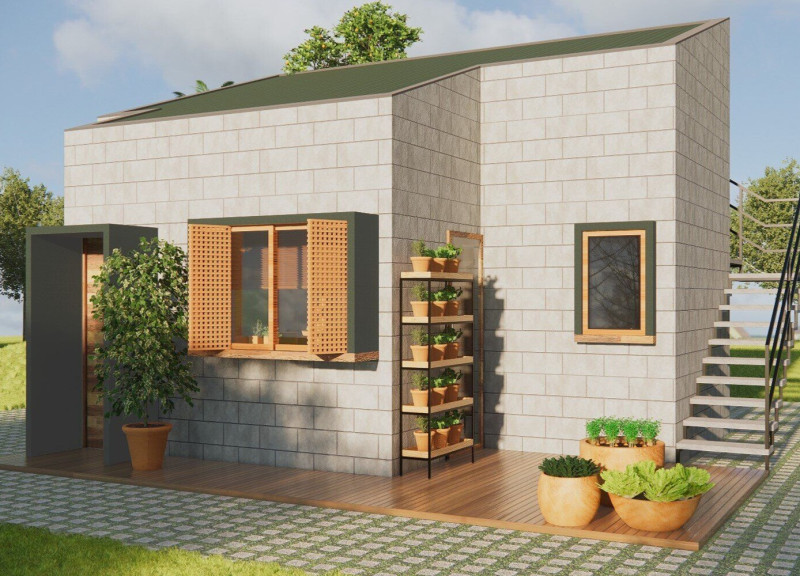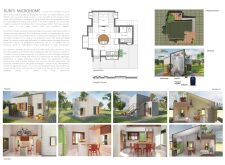5 key facts about this project
Central to this design is the concept of open spaces that encourage social interaction. The layout promotes a fluid movement throughout the building, with corridors and communal areas designed to invite gatherings. Each space has been thoughtfully curated to align with the overall architectural ethos, establishing a coherent narrative throughout the project. The integration of natural light is carefully considered, utilizing expansive windows and skylights to create a warm and inviting atmosphere. This approach not only enhances the aesthetic value of the space but also contributes positively to the well-being of its occupants.
The materiality of the project reveals thoughtful choices that underline both sustainability and durability. The primary materials used include concrete, glass, timber, and steel, each selected to complement the overall design objectives. Concrete provides structural integrity while offering an industrial aesthetic. In contrast, glass elements facilitate transparency and connection with the outdoors, allowing natural light to penetrate deep into the interiors. Timber adds warmth and texture, grounding the design in a more organic feel that contrasts beautifully with the sleekness of steel, which is utilized in structural components and fixtures. the careful interplay of these materials results in a versatile environment adaptable to various uses.
Design details play a vital role in this project, showcasing an array of innovative architectural ideas. Notable elements include the custom-designed furniture that reflects the overall design language of the space and serves practical functions. Additionally, landscaped areas integrated within the design create outdoor zones that blur the boundary between the interior and the exterior. This thoughtful design approach emphasizes a connection to nature, encouraging occupants to engage with their surroundings.
Moreover, the project is situated in a specific geographical context that informs its architectural response. The local climate and cultural identity are evident in the design, as the building orientation and material selections are responsive to environmental factors. This not only promotes energy efficiency but also enhances the building's longevity and resilience, contributing to a sustainable architectural footprint.
Unique design approaches are evident throughout the project. The incorporation of adaptive reuse strategies, where existing structures may be integrated or repurposed within the new design, exemplifies a commitment to sustainability practices. Furthermore, innovative construction techniques, such as modular design elements, allow for flexibility and scalability, making the space easily adjustable as community needs evolve over time.
This architectural project stands as a testament to a thoughtful design process that prioritizes community interaction while respecting environmental contexts and materiality. Its multi-functional design caters to diverse activities, establishing an inviting environment that fosters connection and collaboration among users. The integration of natural elements through landscapes and light contributes to a serene atmosphere conducive to various functions.
For more detailed insights into this architectural endeavor, including architectural plans, sections, and further discussions of the design ideas, the reader is encouraged to explore the project presentation. Engaging with these elements can provide a deeper understanding of the intricate design decisions that inform this impactful project.























